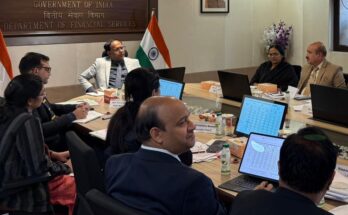New Delhi: The Central Board of Excise and Customs (CBIC) has decided to roll out the faceless assessment at an all India level in all ports of import and for all imported goods by October 31.
The Faceless Assessment is being rolled out under the umbrella of the next generational Turant Customs programme.
The key elements of the Turant Customs programme are faceless, contactless and paperless customs clearance processes.
This includes faceless or anonymised assessment, self-registration of goods by importers, automated clearances of bills of entry, digitisation of Customs documents.
“The objectives sought to be achieved are exponentially faster clearance of goods, reduced interface between trade and Customs officers and enhanced ease of doing business”, as per an internal CBIC circular.
The phased launch of the Turant Customs programme in select ports of import was aimed at testing in a real-life environment, the IT capabilities as well as the responsiveness of the trade and Customs officers to the various initiatives.
“The results have been reviewed and these have confirmed that the stated objectives are being met. The stage is now set for extending the Turant Customs programme across all Customs ports pan India and thereby ushering in a more modern, efficient, and professional Customs administration with resultant benefits for trade and industry”, CBIC noted.
The pilot programme of Faceless Assessment was launched in Chennai on August 14 for primarily electrical machineries falling under Chapter 85 of the Customs Tariff Act,1975.
This pilot programme was subsequently expanded to Ahmedabad, Bengaluru, Delhi, Mundra and Visakhapatnam for goods primarily falling under Chapters 39, 84, 86 to 92, 72 to 83 and 50 to 71 of the Customs Tariff Act, 1975.
CBIC said it was intimated that the designated nodal Commissioners would be precursors to the National Assessment Centres (NACs). Accordingly, the Board has decided to constitute a total 11 NACs, as mentioned in Annexure II. These NACs are organized commodity-wise according to the First Schedule to the Customs Tariff Act, 1975.
Each NAC shall be co-convened by the Principal Chief Commissioners/Chief Commissioners of the Zones. Each NAC shall consist of the Principal Commissioners/Commissioners of Customs.
The NACs have a critical role in the successful implementation of Faceless Assessment. In addition to their existing work, the NACs need to work in a coordinated manner to ensure that all assessments are carried out in a timely manner and there is no delay or hold up of the Bills of Entry. The NACs would also examine the assessment practices of imported goods across Customs stations to bring about uniformity and enhanced quality of assessments.
The important responsibilities of the NACs will be to monitor the assessment practice for enhancing uniformity of classification, valuation, exemption benefit and compliance with import policy conditions. It will also assess the application of Compulsory Compliance Requirements (CCRs) and ensure uniform practices in accordance with the relevant statutes/Legal provisions.
It will also study audit objections and take corrective actions regarding assessments, wherever necessary and provide inputs to the concerned ports of import.
NACs shall also coordinate with Directorate of Revenue Intelligence (DRI) and Directorate General of GST Intelligence (DGGI) related to management of alerts undertaken by the NAC, Directorate General of Valuation (DGoV) to enhance expertise related to sensitive commodities handled. DGoV shall also appoint a nodal person for every NAC for better coordination.
Before the rollout of Faceless Assessment, the Nodal Commissioners in the NAC shall coordinate to take all measures to ensure that Faceless Assessment is smooth and creates no disruption in the assessment and clearance of goods.
Before the launch, the Customs locations within each Zone, performing Faceless Assessment may be identified. The volume of import and availability of adequate officers may be taken into consideration for such identification and nominate sufficient number of officers for the Faceless Assessment. The officers should be more than two at all levels, to ensure availability. To the extent possible, a dedicated team of officers may be posted to the Faceless Assessment Groups.




